10 ways to declutter your bedroom – to make it feel bigger
‘Clutter-free’ and ‘spacious’ are top of the agenda when it comes to creating a relaxing space – here’s how decluttering can make your bedroom feel bigger
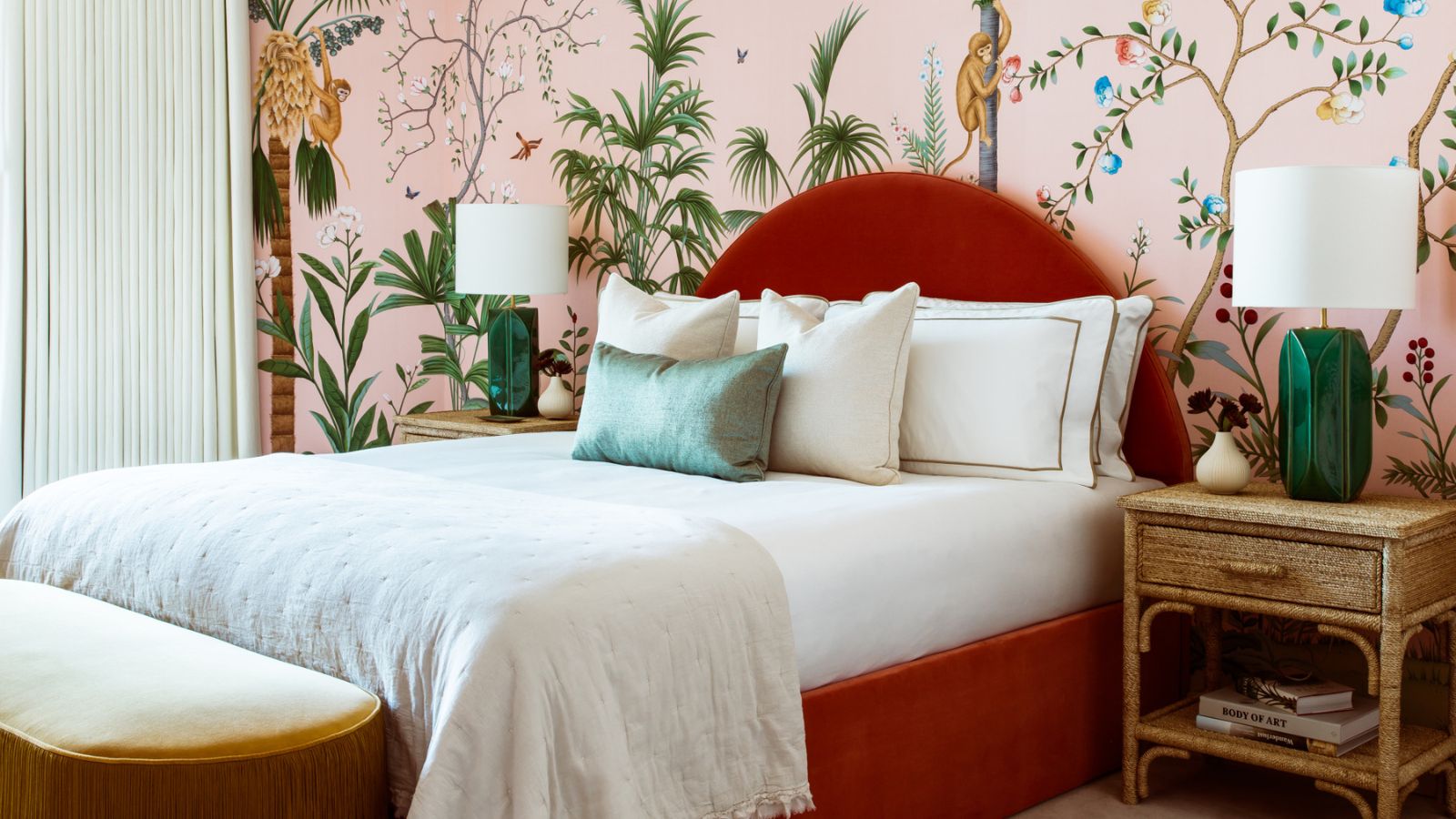
If your bedroom is feeling crowded and cramped, you’ll be glad to know that costly renovations are not the only way to create more space. The simple act of decluttering can make your bedroom feel so much bigger – no structural changes required.
While it may feel like a hassle, paring back your belongings is essential when organizing a bedroom, particularly if it’s ‘bijoux’. According to the experts, clutter and relaxation are not good bedfellows (excuse the pun), so if it’s a good night’s sleep you’re after, a thorough declutter is well worth the effort.
To make a small bedroom look bigger, 'the minimalist approach is a winner every time,' says Kelly Collins, interior designer and head of creative at Swyft. 'Keeping clutter at bay will make it much easier to keep on top of tidiness, which in turn makes for a calm, relaxed and stress-free atmosphere – pretty important in a room that’s meant for recharging!'. Below, our list of experts reveal their approved ways of decluttering a bedroom to make it feel bigger and better.
10 ways to declutter your bedroom to make it feel bigger
When decluttering for that sought-after ‘spacious bedroom’ feel, it’s easy to get wrapped up in the finer details, however, sometimes the simplest things can be the most effective – like making the bed, for example.
‘Coming home after a long day to a beautifully made bed helps not just the room feel airy and less cluttered, but your mind, too. And a decluttered mind means better sleep!’, says professional organizer Julie Onstot of Sort Well Organizing Co.
With that in mind, we’ve put together a list of effective – yet surprisingly simple – ways to declutter your bedroom to make it feel bigger. Let's begin with the basics.
1. Start with a good clear out
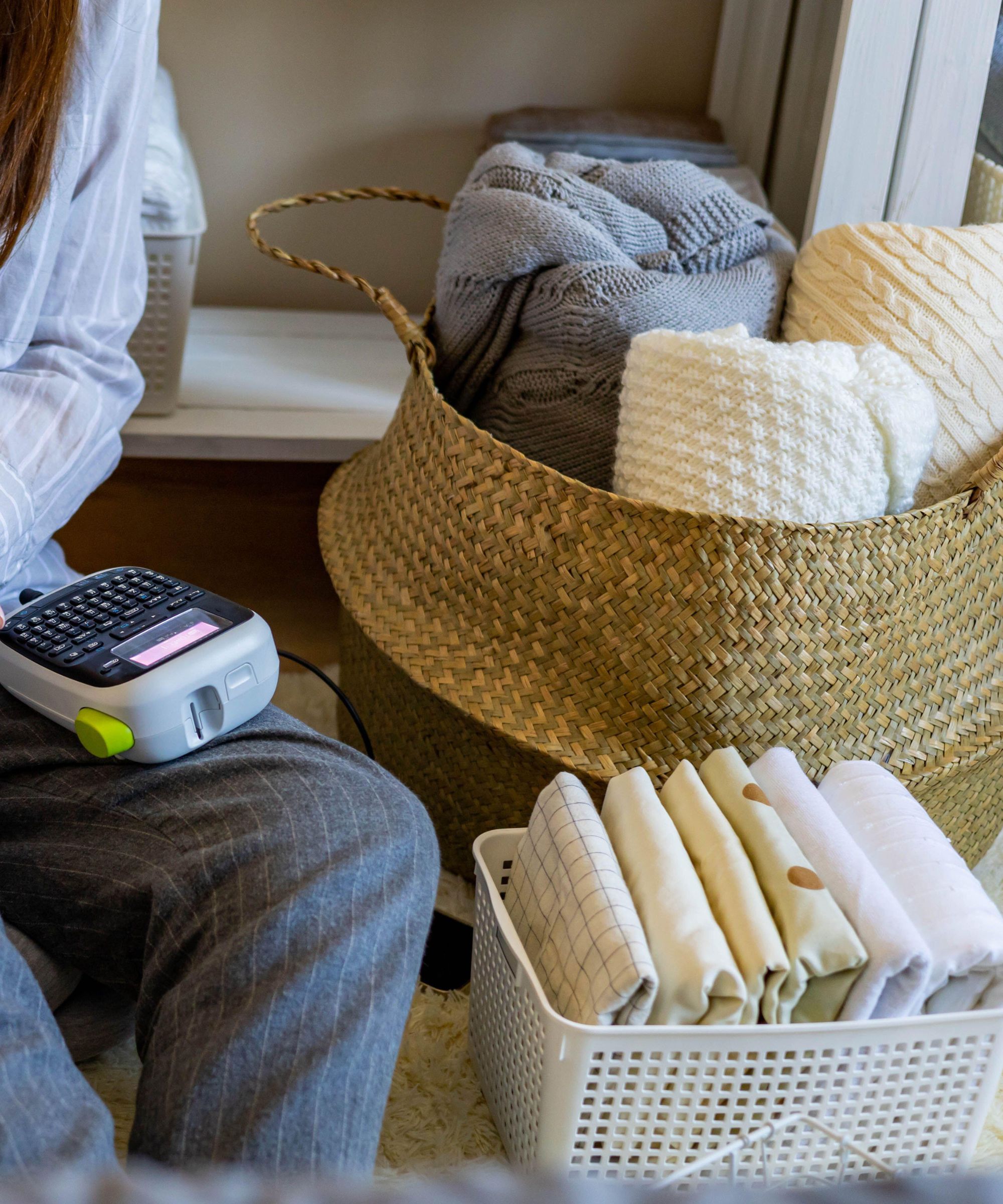
Too much stuff will make any room feel small, cramped and less usable, so when decluttering your bedroom to make it feel bigger, the key is to think like a minimalist. Start by getting rid of anything you don’t need (if you haven’t used it in the last year, you likely never will) and cutting back on duplicates.
Next, give some thought to the room’s primary purpose – getting a good night’s sleep. Anything that’s not conducive to that should be housed elsewhere.
‘Your bedroom should be a place of rest and relaxation, so bringing anything into the space that alters that energy is a hard no from us’, says Shannon Krause, chief operating organizer at Tidy Nest. ‘Paperwork, homework, or anything to do with your profession or education should live outside of the bedroom – bringing it in is a constant reminder that you have a to-do list waiting for you’.
Decluttering can be an overwhelming process, so don’t try and tackle it all on one go. Start with the bigger items, then move onto organizing drawers and really well thought-out closet organization ideas.
2. Rethink your furniture choices

Despite what many think, bulky furniture actually works against you when it comes to achieving a clutter-free bedroom. Aside from taking up valuable floor space, they’re a hotspot for hoarding items you just don’t need.
Opting for more minimal bedroom storage ideas may feel counterintuitive, but it forces you to keep on top of clutter and prioritize your essentials. Swap to sleek and streamlined pieces, or consider dual-purpose pieces, such as a blanket box that doubles up as a seat, or an ottoman storage bed, for example. Nightstands could also be replaced with floating shelves and wall-mounted lights to give the illusion of a wider floor space.
3. Keep display items to a minimum
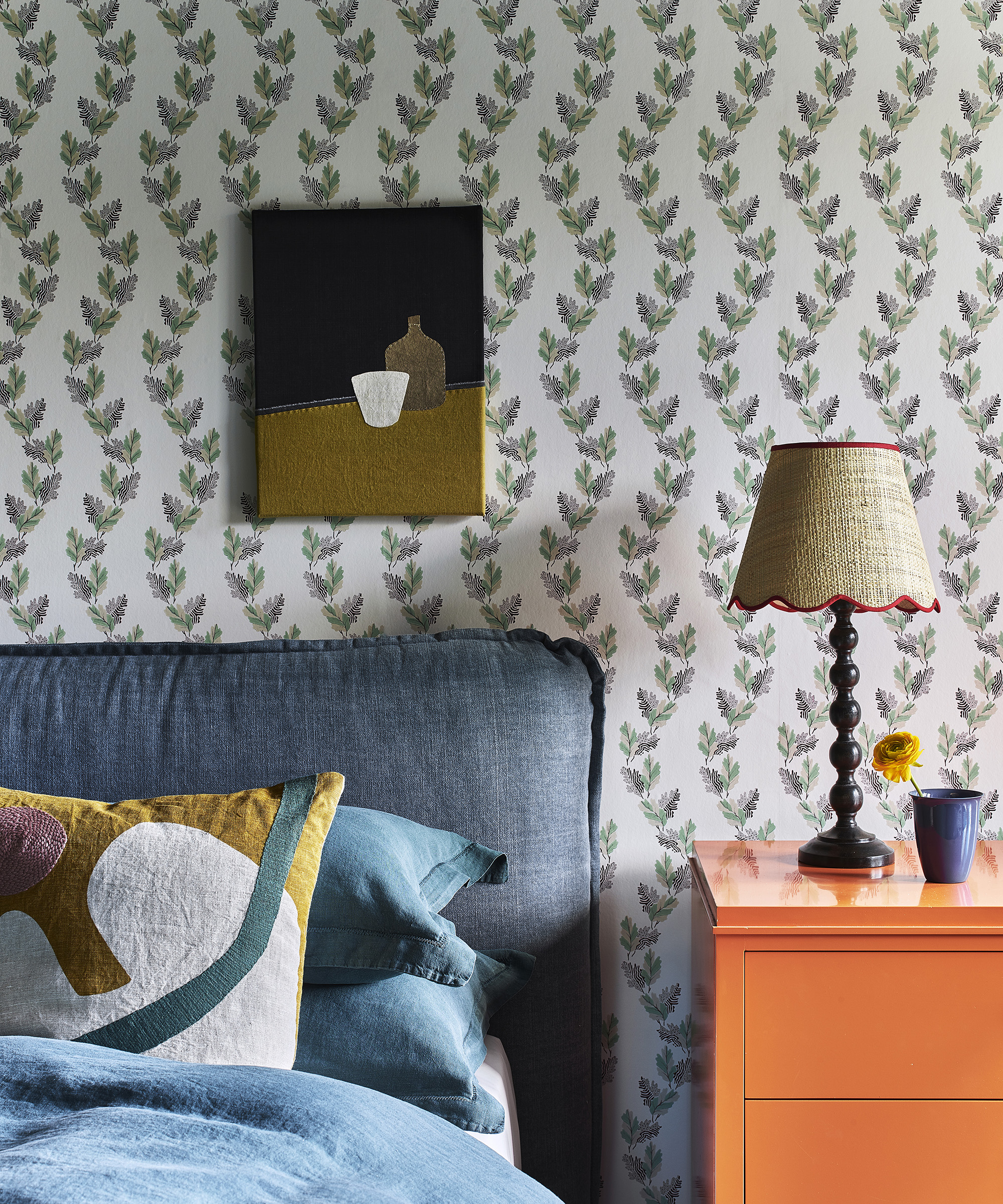
To achieve that sought-after spacious feel, it’s better to have fewer, larger pieces on show around the room rather than lots of little pieces cluttering up bedroom surfaces. Try to limit yourself to just a few, purposeful (and aesthetically-pleasing) pieces on show – a statement vase, a framed family photo or a good-looking alarm clock, for example. Anything else can be stored away out of sight.
4. Group belongings mindfully
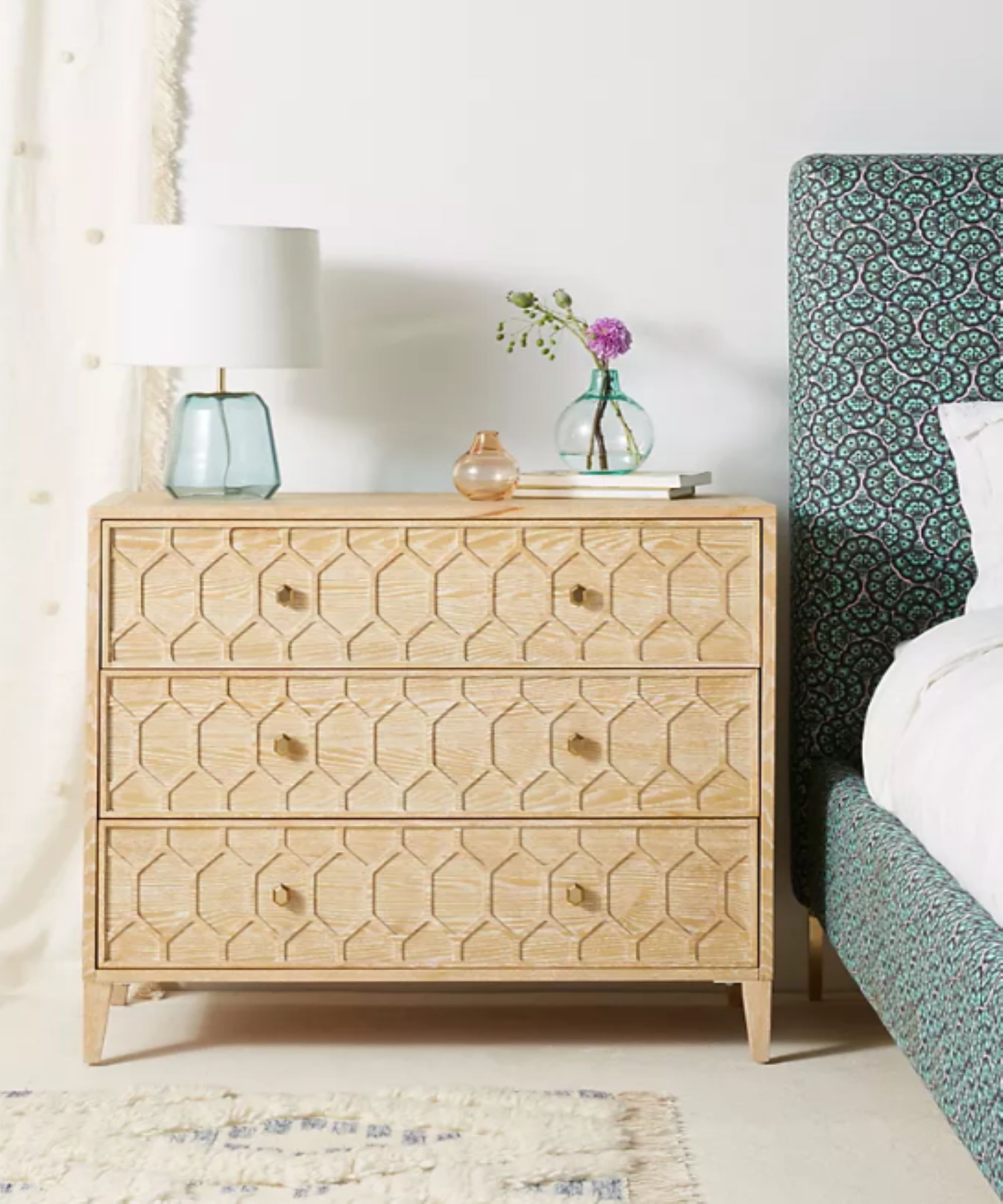
Bedroom styling extends to surfaces; get these in shape and you will have a more streamlined feel overall. So it’s important to put as much thought into how you display items on your bedroom surfaces as you do into the items themselves. Meaningful, artistic arrangements will add aesthetic value, as well as functionality. A good rule of thumb is to group items in odd numbers, ensuring plenty of space around them.
According to Heather Goerzen of Havenly, nightstands in particular are clutter-prone areas that truly benefit from a considered, ‘less-is-more’ approach.
‘Position a lamp for ambient lighting, and then add essentials only: your latest book, a relaxing candle and a small catch-all dish for jewelry and glasses, for example. Don’t forget to deal with cords – these can be one of the most visually jarring things in a bedroom, so hook them to the back of your nightstands to keep them out of sight’, she says.
5. Incorporate stylish storage for easy access
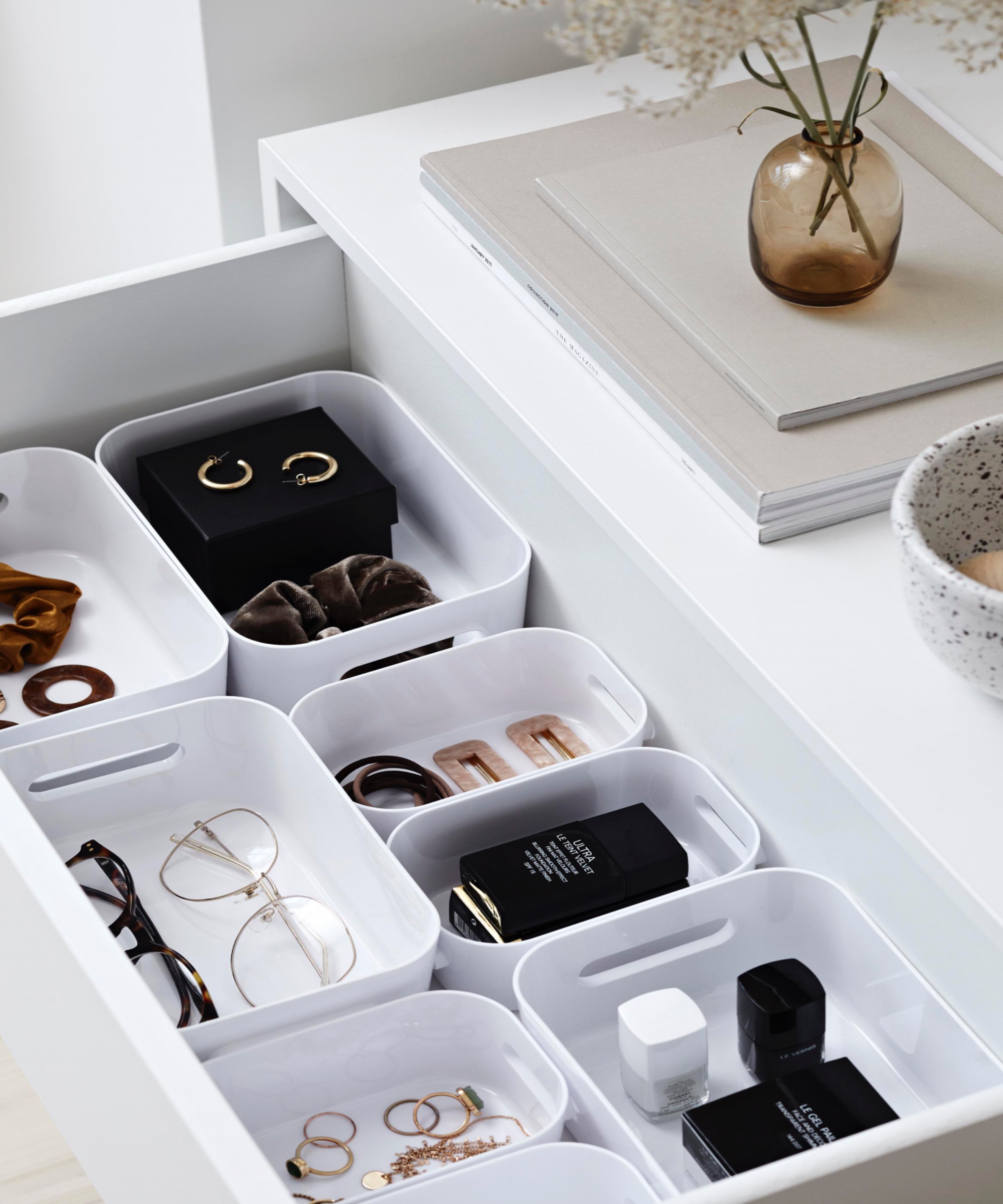
When decluttering a bedroom, it’s important not to lose sight of practicality – you won’t thank yourself when you’re rushing to get ready in the mornings! The trick is to find a way to keep essentials close to hand, without sacrificing on a stylish, clutter-free scheme.
Chic baskets, boxes and containers are great for containing small knick-knacks and ‘unsightly’ essentials, and look lovely integrated into curated groupings. Avoid transparent materials if you can, and choose stackable designs to save on space. Dedicate a drawer to different items – organizing makeup in one, organizing jewelry in another, for example, so you can reach straight for what you need.
6. Clear out your closet
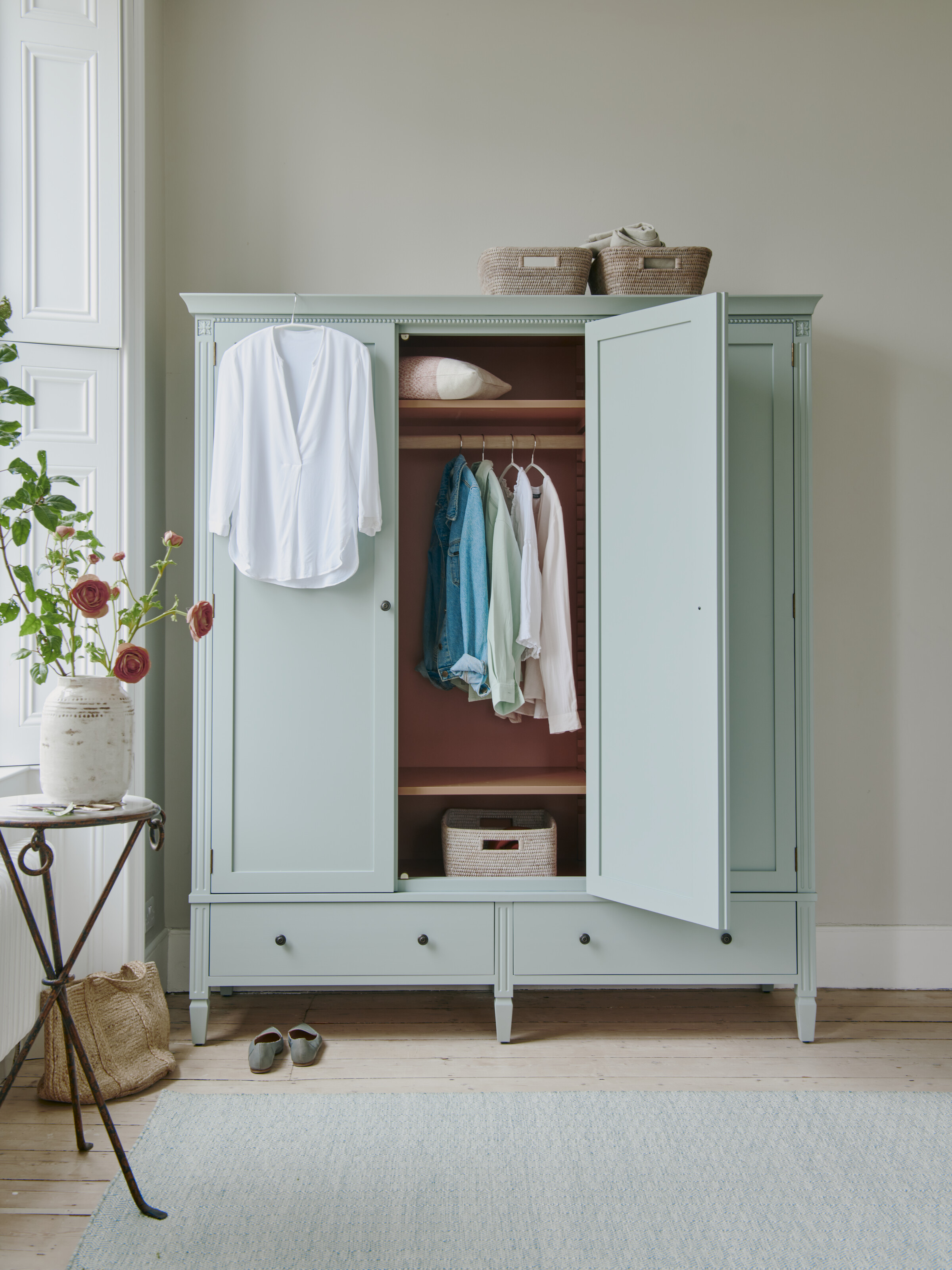
People often feel reluctant to declutter their clothes, but ultimately, if they don’t fit in your closet, you have too many! Piles of ‘unhomed’ items lying around are not conducive to a spacious, clutter-free feel. To avoid it, you’ll need to declutter according to the storage you have – whether you like it or not!
‘To make it less of an overwhelming task, try editing category by category in short bursts of 20-30 minutes. Take out all of your sweaters and decide which ones you actually wear. Then move on to pants, skirts etc. Breaking it down and seeing everything in front of you makes it much easier to make decisions. When everything fits in your closet, the room will instantly feel bigger and more manageable’, says professional organizer Laura Price of The Home Organisation.
With more closet space available, you’ll have the option to move bedroom items behind closed doors for a more streamlined feel. Consider dedicating a shelf to ‘knick-knack’ prone categories, such as your jewelry or make-up, for example.
7. Utilize space under the bed
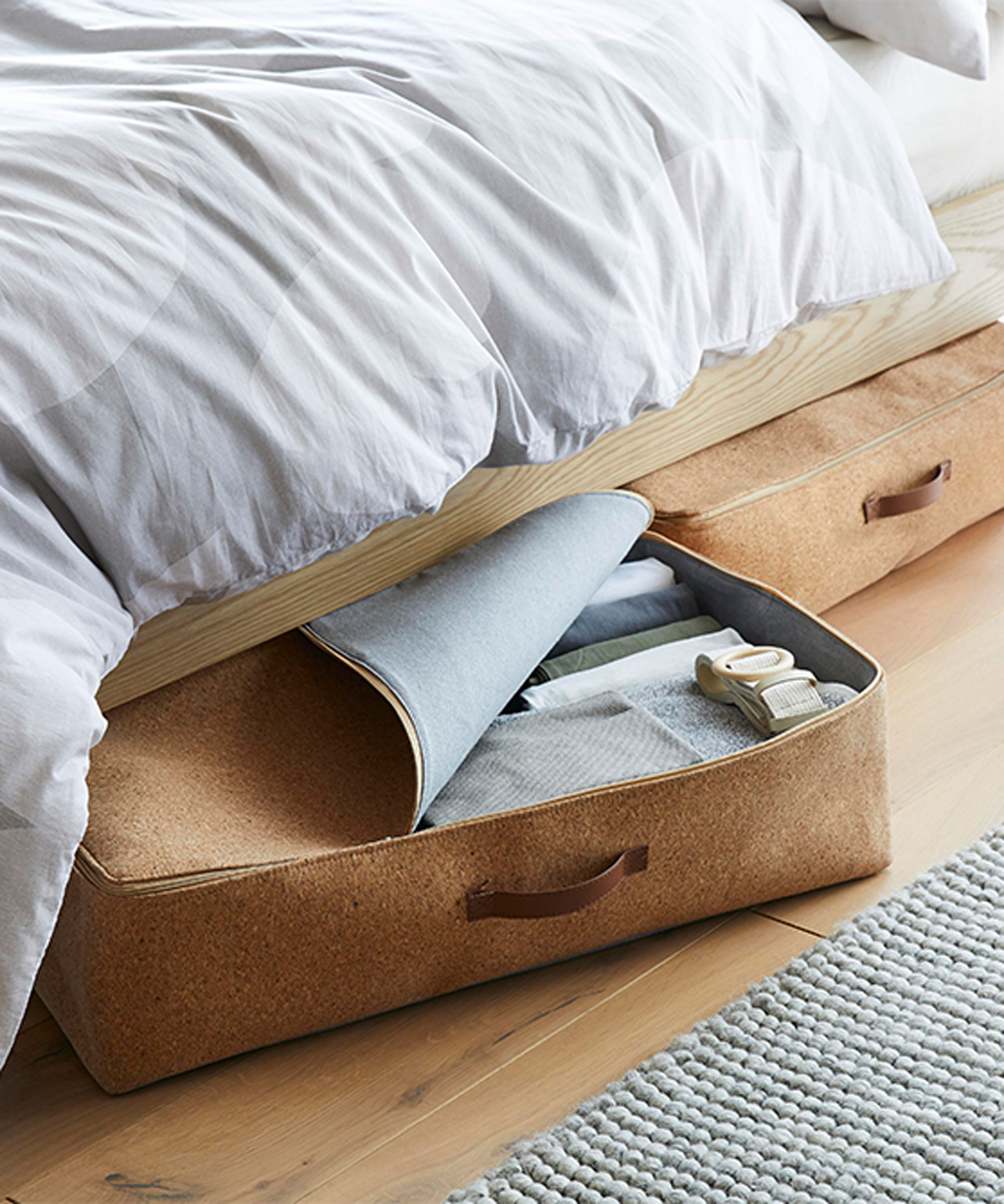
Often overlooked, underbed storage ideas offer up a wealth of storage opportunities without taking up extra floor space. Pull out drawers, bags or boxes (measure beforehand for a snug fit) are useful, but be aware that out of sight usually means out of mind, so schedule in regular declutters to keep them relevant.
If you don’t want boxes on show, an ottoman-style bed is great for maximizing space, lifting up to reveal a wealth of storage inside. This isn’t something you’ll want to do everyday, so be sure to fill it with items that you don’t need everyday access to.
If you’re still struggling for space, consider moving non-seasonal items outside of the room altogether – bedding and clothing for example. This is where vacuum pack storage comes in handy; pack up and label each bag clearly then relocate to the loft or garage.
8. Keep the floor clear
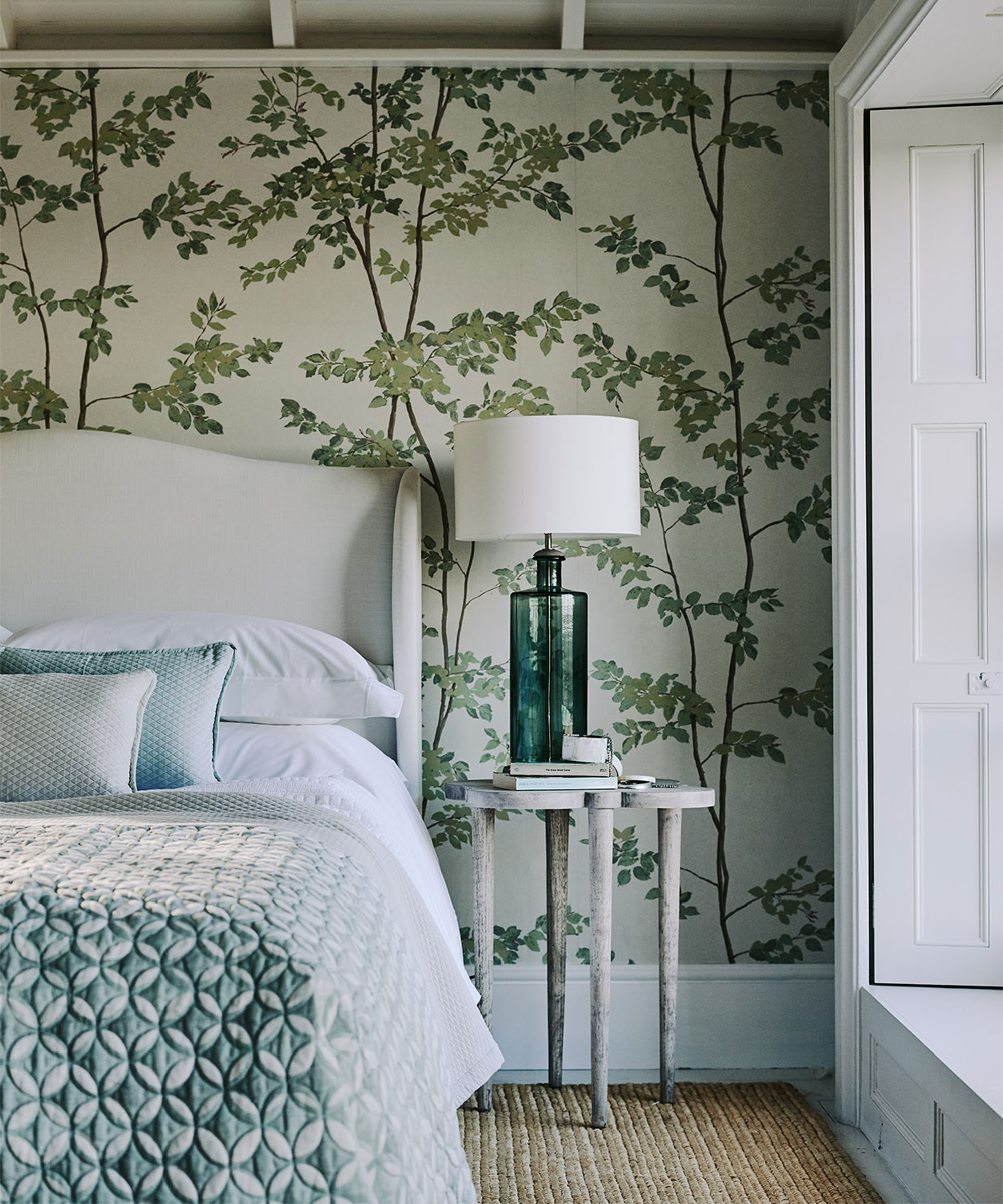
‘Keeping floors clean, tidy and clear of clutter will trick your brain into thinking the space is larger than it is’, says professional organizer Katherine Blackler of SortMySpace Ltd. ‘The brain subconsciously scans a room for its perimeter, so the further you can see, the calmer you’ll feel’.
If you’re anything like us, piles of dirty laundry and shoes tend to be the main culprits – investing in effective bedroom organizers, such as well-placed baskets and hampers, is the easiest way to keep them at bay. Pick a stylish design if it’s out on show, or opt for a lidless version if you’re storing it inside a closet.
9. Opt for open shelving – but keep it tidy
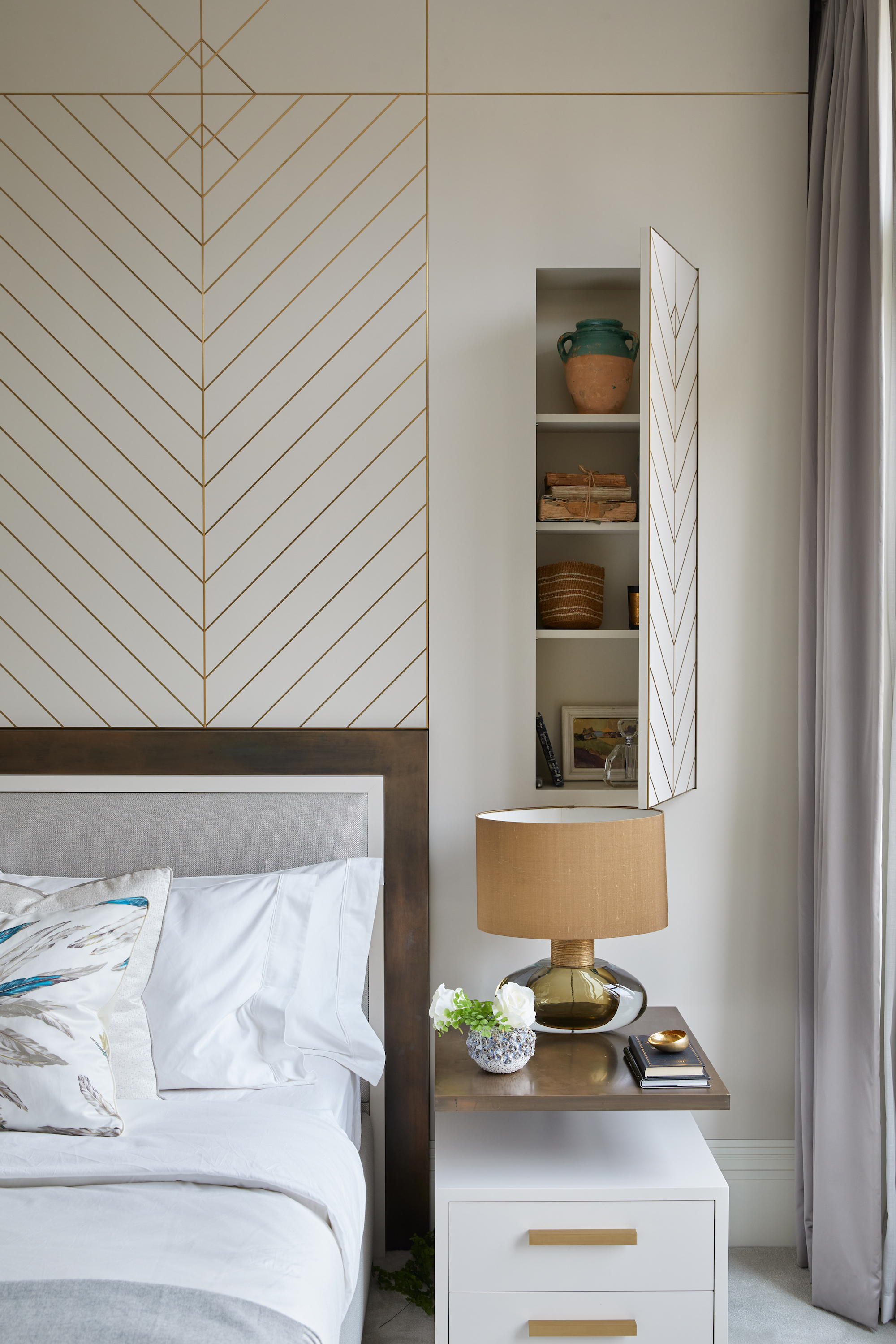
Whether you’ve opted for an open-plan closet or just a few floating shelves, wall-mounted storage is a designer’s go-to for creating the illusion of extra floor space. Choosing open shelving over closets is more economical, but it’s essential you keep on top of tidiness if you want to avoid a cluttered vibe.
If you want your bedroom to feel bigger, try positioning shelves higher up the wall – the lower the shelving, the more compact the room will feel. The same goes for artwork, peg boards and any other wall-mounted items.
10. Lean towards lidded storage
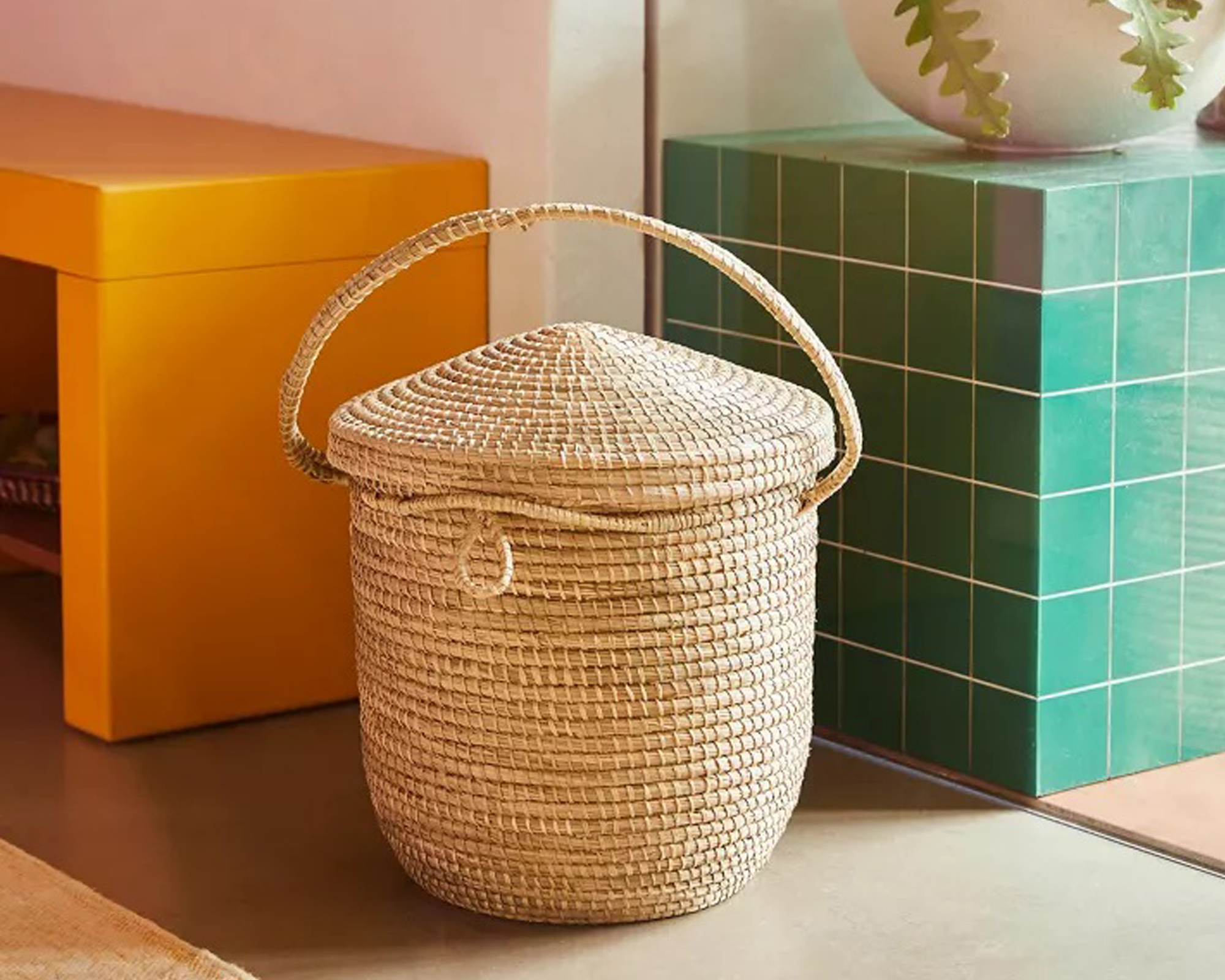
Too much open storage on-show can make a bedroom feel over-full, so opt for ‘hidden’ designs where possible to conceal everyday items and create a visually calm space.
Ideally, most items will be in drawers or closets, but anything below eye-level should have a lid – baskets are particularly good for easy access,' advises Vicky Silverthorn of You Need a Vicky.
How do you declutter a small bedroom?
Space constraints pose a big challenge when it comes to efficient bedroom organization, so decluttering a small bedroom – and keeping it clutter-free – is essential. The process can be daunting, so don’t attempt it all at once. Set yourself sensible time limits and realistic goals to keep motivation levels high, and focus on one area at a time, the closet or the nightstand, for example.
When decluttering a small bedroom in particular, there’s no room for ‘maybe’ items –quite literally. So be strict with yourself. If you’re dealing with sentimental items, it might be worth asking a friend for some moral support. For items you truly can’t part with, seek out other areas of the home to store them in, such as the attic or garage, but limit yourself to just one box if possible.
How do I organize my bedroom with too much stuff?
The truth is, you can’t organize a bedroom with too much stuff – not efficiently, anyway. So task number one is to declutter. The aim is to wind up only with items you truly need in your life, so bear this in mind at all times. Ask yourself when you last used / needed an item. If it was more than a year ago, get rid.
Once you’ve worked through everything, look at what you’re left with and establish which items belong in a bedroom. If they’re not serving the purpose of a good night’s sleep, relocate them elsewhere. Anything associated with work or life admin, such as electronic devices and paperwork has no place in a bedroom either.
It’s worth rethinking your storage options, too. Is what you’ve currently got working hard enough? Consider investing in under-bed storage and / or multifunctional furniture pieces to utilize the space you’ve got to its best potential.
Sign up to the Homes & Gardens newsletter
Design expertise in your inbox – from inspiring decorating ideas and beautiful celebrity homes to practical gardening advice and shopping round-ups.
For 10 years, Tara King worked as a Content Editor in the magazine industry, before leaving to become freelance, covering interior design, wellbeing, craft and homemaking. As well as writing for Ideal Home, Style at Home, Country Homes & Interiors, Tara’s keen eye for styling combined with a passion for creating a happy – and functional – family home has led to a series of organization and cleaning features for H&G.
-
 These are the 6 must-have colors to decorate with in April 2025
These are the 6 must-have colors to decorate with in April 2025What do retro-inspired yellows and beautiful blues all have in common? They're on our hot list for the season ahead
By Sophia Pouget de St Victor Published
-
 Plants never to grow next to fruit trees
Plants never to grow next to fruit treesExpert advice on which plants to keep away from fruit trees to encourage a healthy harvest
By Jacky Parker Published
-
 7 dorm room organizing rules for less clutter and more space
7 dorm room organizing rules for less clutter and more spaceExperts offer their top tips for creating a well-organized dorm room, no matter the size, space, or layout.
By Ashley Chalmers Published
-
 How to maximize storage in a small or shared dorm room, according to pro organizers
How to maximize storage in a small or shared dorm room, according to pro organizersFind out all the hidden storage zones you might never have noticed
By Ashley Chalmers Published